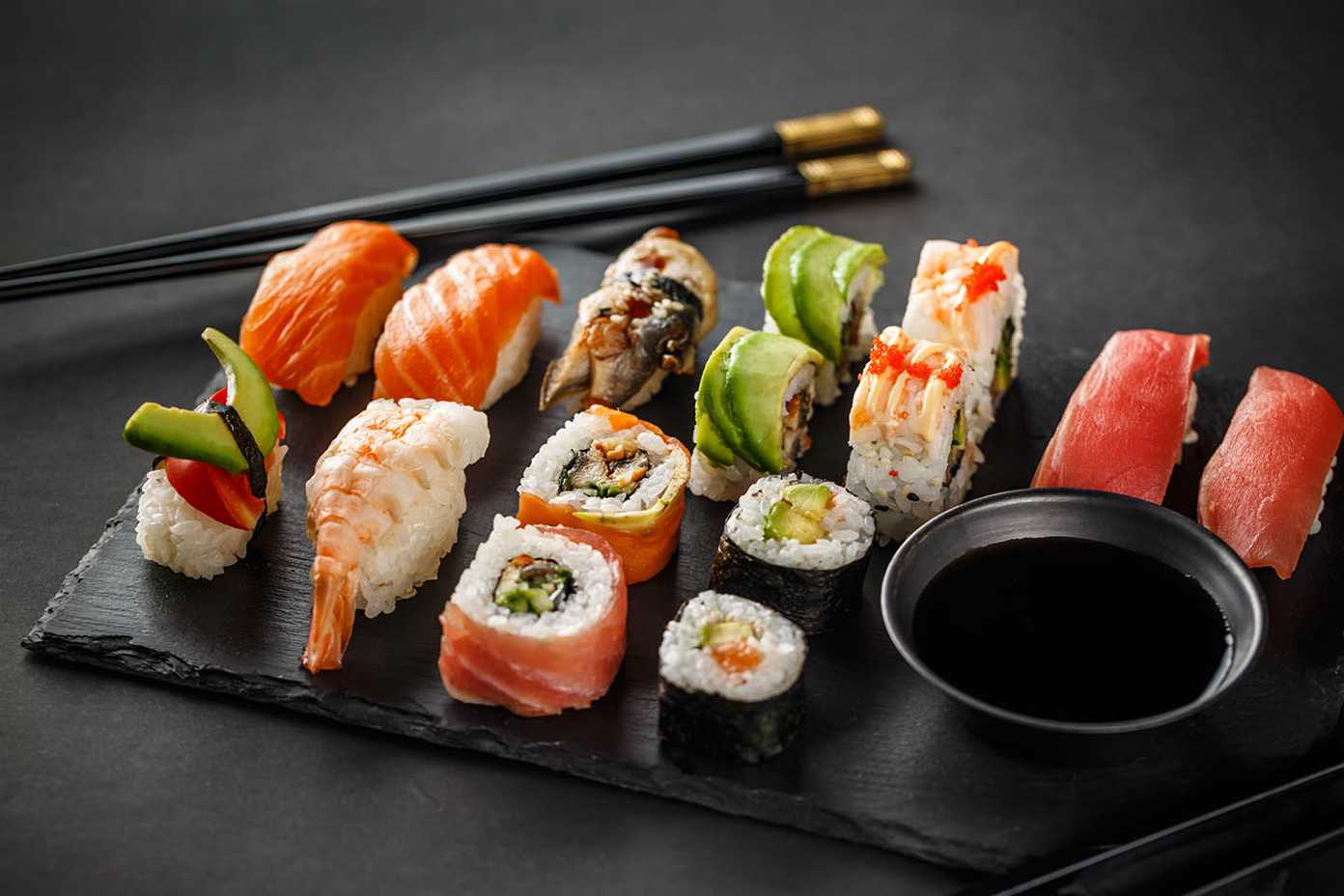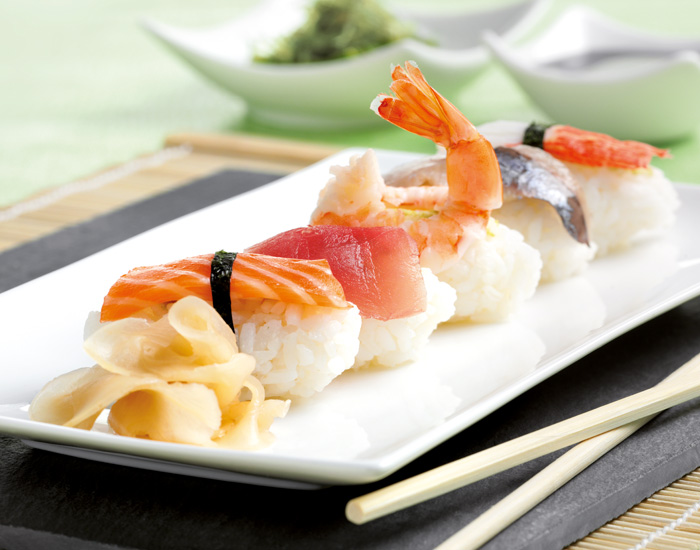Sushi, a beloved Japanese dish consisting of vinegared rice combined with various ingredients such as fish, seafood, vegetables, and sometimes even tropical fruits, has gained immense popularity worldwide. Whether you enjoy it at a fancy restaurant or make it at home, sushi is undoubtedly a culinary delight. However, one question that often arises is: how long can sushi last in the fridge? In this comprehensive guide, we’ll delve into this topic to provide you with all the information you need to know about storing sushi leftovers.
Key Factors Affecting Sushi Shelf Life

Before discussing how long sushi can last in the fridge, it’s crucial to understand the factors that influence its shelf life. Sushi is a perishable food item, primarily due to the presence of raw fish and seafood. Additionally, the moisture content in sushi rice makes it susceptible to bacterial growth if not stored properly. Therefore, proper handling and storage are essential to ensure food safety and maintain sushi’s quality.
Ingredients Quality and Freshness
- Fish and Seafood: Raw fish and seafood are central components of sushi, and their freshness is paramount. Fresh fish should have a mild ocean scent and firm texture. Avoid using fish that smells overly fishy or has a slimy texture, as these are signs of spoilage.
- Rice: Sushi rice, seasoned with vinegar, sugar, and salt, serves as the base for most sushi dishes. High-quality sushi rice should be sticky but not overly wet, with each grain distinct and properly cooked. Properly prepared sushi rice enhances the overall taste and texture of sushi.
- Vegetables and Other Ingredients: Fresh vegetables, such as cucumbers, avocados, and carrots, add crunch and flavor to sushi rolls. Ensure that vegetables are crisp and free from mold or signs of decay. Other ingredients, such as tofu or eggs, should also be fresh and properly cooked.
Storage Conditions
- Temperature: Sushi should be stored at a consistent refrigerator temperature of 40°F (4°C) or below. Cold temperatures slow down bacterial growth and help preserve the quality of raw fish and seafood.
- Humidity: While sushi rice benefits from a slightly moist environment to prevent drying out, excessive moisture can lead to soggy rice and bacterial growth. Store sushi in airtight containers or wrap it tightly in plastic wrap to maintain the right level of moisture.
- Separation: Store different types of sushi separately to prevent cross-contamination and preserve their individual flavors. For example, keep nigiri sushi separate from sushi rolls to maintain their integrity and prevent rice from absorbing excess moisture.
Handling Practices
- Cleanliness: Ensure that hands, utensils, and surfaces are clean and sanitized when preparing and handling sushi. Dirty surfaces or utensils can introduce harmful bacteria and compromise food safety.
- Avoiding Cross-Contamination: Keep raw fish and seafood separate from cooked ingredients to prevent cross-contamination. Use separate cutting boards, knives, and utensils for raw and cooked ingredients to reduce the risk of foodborne illness.
- Prompt Refrigeration: Refrigerate sushi leftovers promptly to minimize the time they spend at room temperature. Bacterial growth accelerates at temperatures between 40°F and 140°F (4°C to 60°C), so storing sushi in the fridge slows down microbial proliferation and extends its shelf life.
How Long Does Sushi Last in the Fridge?

The shelf life of sushi stored in the fridge can vary depending on several factors. While sushi is best consumed fresh, it can be refrigerated for a limited time to prolong its usability. Here’s a breakdown of how long different types of sushi can last in the fridge:
Nigiri Sushi

- Refrigeration: Nigiri sushi should be stored in the refrigerator at a consistent temperature of 40°F (4°C) or below. Cold temperatures slow down bacterial growth and help maintain the quality of the raw fish and sushi rice.
- Airtight Packaging: Store nigiri sushi in airtight containers or wrap it tightly in plastic wrap to prevent exposure to air and moisture. This helps to preserve the texture of the rice and prevent it from drying out.
Handling Practices:
- Cleanliness: Ensure that hands, utensils, and surfaces are clean and sanitized when handling nigiri sushi. Dirty surfaces or utensils can introduce harmful bacteria, compromising food safety.
- Separation: Keep different types of nigiri sushi separate to prevent cross-contamination. Store fish varieties separately to maintain their individual flavors and prevent any potential mixing of juices.
- Prompt Consumption: Nigiri sushi is best enjoyed fresh, ideally on the same day it is prepared. While it can be refrigerated for up to 24 hours, it’s recommended to consume nigiri sushi as soon as possible to enjoy its optimal taste and texture.
Maki Sushi (Sushi Rolls)

- Refrigeration: Store maki sushi in the refrigerator at a temperature of 40°F (4°C) or below to slow down bacterial growth and maintain the quality of the ingredients. Cold temperatures help preserve the texture of the rice and prevent spoilage.
- Airtight Packaging: Wrap maki sushi tightly in plastic wrap or store it in airtight containers to prevent exposure to air and moisture. This helps maintain the freshness of the sushi rolls and prevents them from drying out.
Handling Practices:
- Cleanliness: Ensure that hands, utensils, and surfaces are clean and sanitized when handling maki sushi. Dirty surfaces or utensils can introduce harmful bacteria, compromising food safety.
- Slicing: When slicing maki sushi into individual pieces, use a sharp knife to achieve clean cuts without crushing the rolls. Properly sliced sushi rolls maintain their shape and presentation, enhancing the dining experience.
- Separation: Store different types of maki sushi separately to prevent cross-contamination and preserve their individual flavors. Keep vegetarian rolls separate from those containing raw fish or seafood to maintain their integrity.
While maki sushi can be refrigerated for a short period, it is best enjoyed fresh and should ideally be consumed within 24 to 48 hours of preparation. Prompt consumption ensures the optimal taste and texture of the sushi rolls, allowing you to savor their delicious flavors to the fullest.By adhering to these key factors and following proper storage and handling practices, you can maximize the shelf life of maki sushi while ensuring its safety and quality. Enjoying freshly made maki sushi at home is a delightful culinary experience that can be enjoyed responsibly with attention to detail.
Sashimi

- Refrigeration: Store sashimi in the refrigerator at a consistent temperature of 40°F (4°C) or below to slow down bacterial growth and maintain the quality of the fish. Cold temperatures help preserve the texture and flavor of the sashimi.
- Moisture Control: Sashimi should be stored in a way that prevents excess moisture from accumulating, as this can lead to a deterioration in texture and flavor. Place sashimi on a plate lined with paper towels to absorb any excess moisture and prevent the fish from becoming soggy.
Handling Practices
- Cleanliness: Ensure that hands, utensils, and surfaces are clean and sanitized when handling sashimi. Dirty surfaces or utensils can introduce harmful bacteria, compromising food safety.
- Slicing Technique: Slicing sashimi requires precision and skill to achieve thin, uniform slices that showcase the natural beauty of the fish. Use a sharp knife to slice the fish against the grain, resulting in tender slices with a smooth texture.
- Separation: Store different types of sashimi separately to prevent cross-contamination and preserve their individual flavors. Keep different varieties of fish or seafood in separate containers to maintain their integrity.
Sashimi is best enjoyed fresh and should ideally be consumed within 24 hours of preparation. Prompt consumption ensures the optimal taste and texture of the fish, allowing you to savor its delicate flavors to the fullest.
Vegetarian Sushi

- Refrigeration: Store vegetarian sushi in the refrigerator at a temperature of 40°F (4°C) or below to slow down bacterial growth and maintain the quality of the ingredients. Cold temperatures help preserve the texture and flavor of the sushi rolls.
- Airtight Packaging: Wrap vegetarian sushi tightly in plastic wrap or store it in airtight containers to prevent exposure to air and moisture. This helps maintain the freshness of the ingredients and prevents the sushi rolls from drying out.
Handling Practices
- Cleanliness: Ensure that hands, utensils, and surfaces are clean and sanitized when handling vegetarian sushi. Dirty surfaces or utensils can introduce harmful bacteria, compromising food safety.
- Slicing Technique: Use a sharp knife to slice vegetarian sushi rolls into uniform pieces. Clean cuts help maintain the shape and presentation of the sushi rolls, enhancing the overall dining experience.
- Separation: Store different types of vegetarian sushi separately to prevent cross-contamination and preserve their individual flavors. Keep rolls with raw vegetables separate from those with cooked ingredients to maintain their integrity.
While vegetarian sushi can be refrigerated for a short period, it is best enjoyed fresh and should ideally be consumed within 24 to 48 hours of preparation. Prompt consumption ensures the optimal taste and texture of the sushi rolls, allowing you to savor their vibrant flavors to the fullest.
Tips for Storing Sushi Leftovers
To maximize the shelf life of sushi leftovers and ensure food safety, follow these essential tips for proper storage:
1. Use Airtight Containers:
Store sushi leftovers in airtight containers to prevent exposure to air and moisture. This helps retain the sushi’s moisture content and prevents it from drying out.
2. Wrap Tightly:
If you don’t have airtight containers, wrap the sushi tightly in plastic wrap. Make sure to wrap each piece individually to minimize air exposure and maintain freshness.
3. Refrigerate Promptly:
After enjoying your sushi meal, refrigerate any leftovers promptly. Bacteria multiply rapidly at room temperature, so refrigerating sushi as soon as possible slows down bacterial growth and preserves its quality.
4. Maintain Consistent Temperature:
Store sushi in the refrigerator at a consistent temperature of 40°F (4°C) or below. This temperature range inhibits bacterial growth and helps keep the sushi fresh for a longer period.
5. Consume Quickly:
While sushi can be stored in the refrigerator for a short period, it’s best to consume leftovers within a day or two. The longer sushi sits in the fridge, the more its quality deteriorates. Aim to eat leftover sushi as soon as possible to enjoy it at its best.
6. Avoid Reheating:
Sushi is meant to be enjoyed cold, and reheating can alter its texture and flavor. Instead of reheating sushi, consume it cold or at room temperature to preserve its original taste and quality.
7. Consider Freezing:
If you have a large amount of leftover sushi and know you won’t be able to consume it within a day or two, consider freezing it. Wrap the sushi tightly in plastic wrap and then place it in an airtight container before freezing. Frozen sushi can last for a few weeks, but keep in mind that its texture may change upon thawing.
8. Monitor Storage Time:
Keep track of how long sushi has been stored in the refrigerator to ensure it’s consumed within the recommended timeframe. Label containers with the date to help you keep track of storage time and prioritize eating older leftovers first.
Conclusion
Sushi can last for a limited time when stored in the fridge, with factors such as ingredients, storage conditions, and handling practices influencing its shelf life. By following proper storage guidelines and consuming sushi leftovers promptly, you can enjoy this delectable dish while minimizing food waste and ensuring food safety. Remember to prioritize freshness and quality when indulging in sushi, whether dining out or preparing it at home. With the right approach to storage and handling, you can savor the flavors of sushi without compromising on taste or safety.


